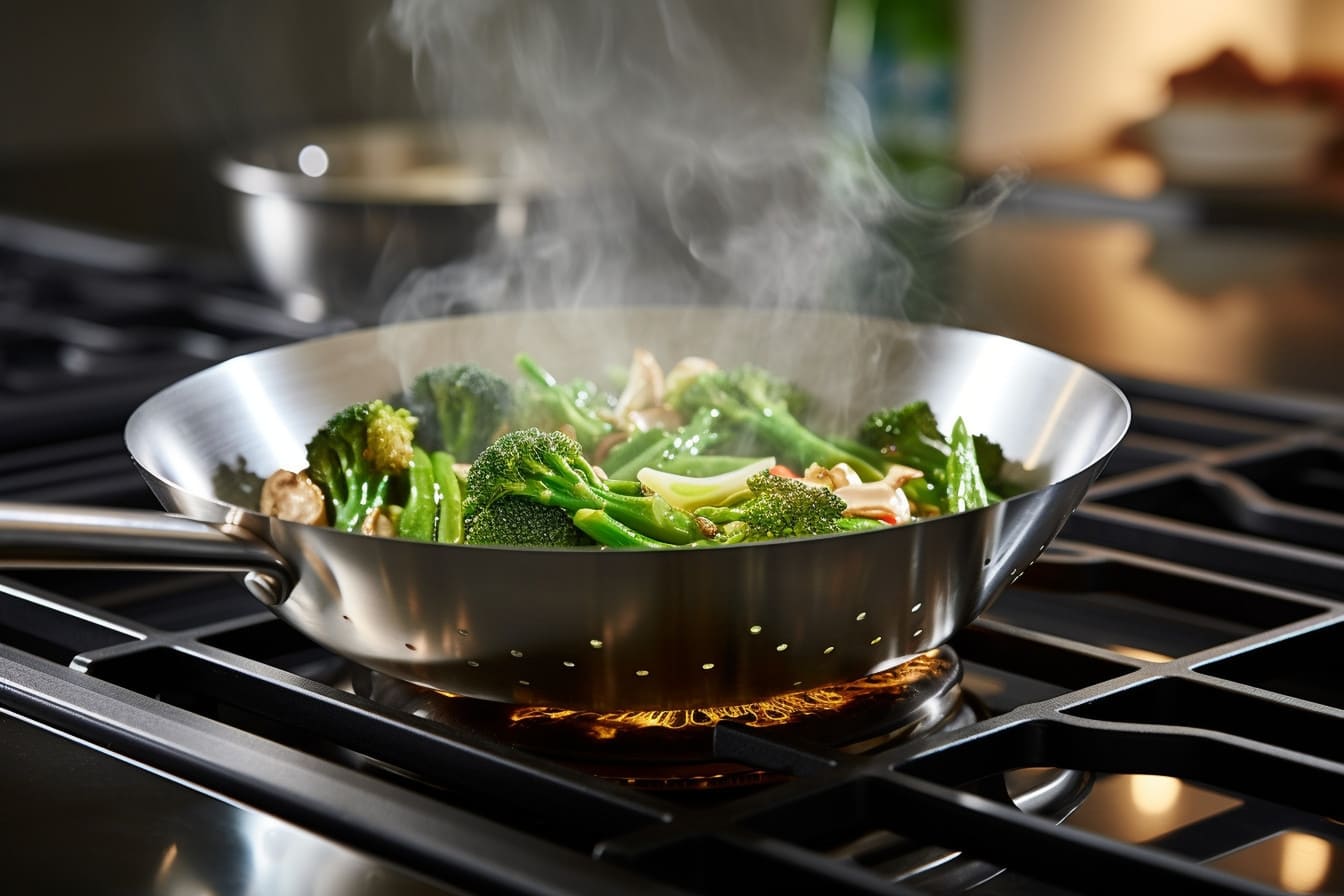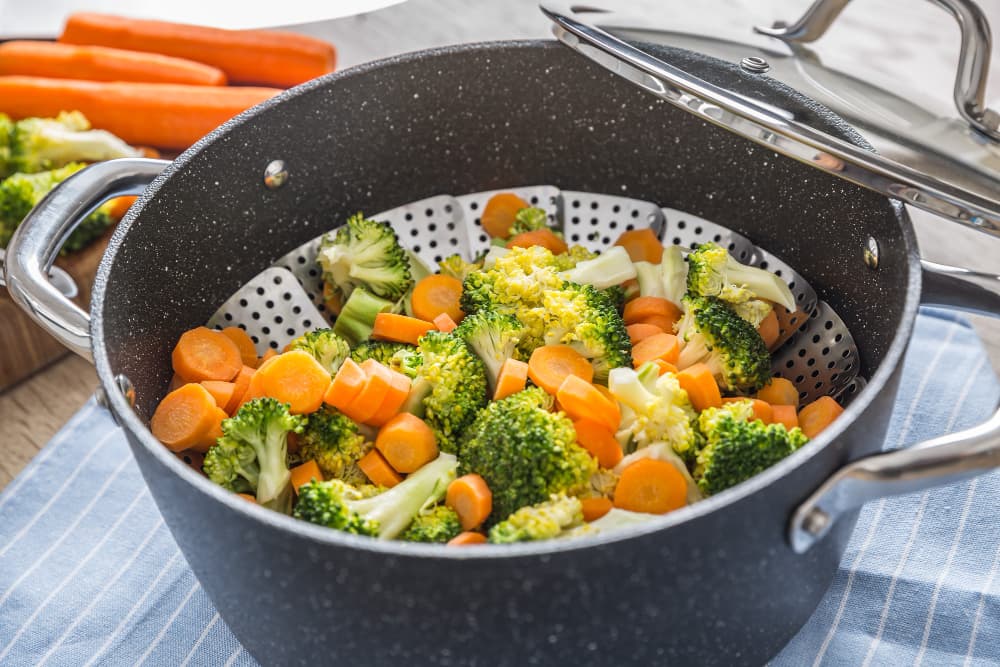Blog
How to Better Preserve Nutrients When Cooking

Cuando preparamos nuestros alimentos, no solo buscamos sabor, textura o presentación. También es importante asegurarnos de que los nutrientes que contienen los ingredientes se mantengan en la mayor proporción posible. La forma en que cocinamos puede marcar una gran diferencia en el valor nutricional de nuestros platos. Desde el método de cocción hasta los utensilios que usamos, todo influye. Hoy en KuokoKitchen te contamos cómo conservar mejor los nutrientes al cocinar, con consejos prácticos y sencillos que puedes aplicar en tu cocina desde hoy.
El método de cocción
Algunos tipos de coccion tienden a conservar mejor los nutrientes que otros. Por ejemplo, el vapor es uno de los mejores aliados cuando se trata de mantener intactas las vitaminas y minerales, especialmente en verduras. Cocinar al vapor evita el contacto directo con el agua, lo que impide que los nutrientes hidrosolubles, como la vitamina C o algunas del grupo B, se disuelvan y se pierdan.
El salteado rápido a fuego medio-alto, con poco aceite y por poco tiempo, también es una técnica eficaz para conservar nutrientes de los alimentos, especialmente en vegetales. A diferencia de la fritura prolongada, este método mantiene la textura, el color y gran parte del valor nutricional de los alimentos.
Por el contrario, la cocción prolongada en agua (como hervir) puede provocar grandes pérdidas nutricionales, especialmente si después se desecha el líquido de cocción. Si necesitas hervir algún alimento, una buena práctica es reutilizar el agua para sopas o guisos.
Utensilios adecuados
Los utensilios que usas en tu cocina pueden marcar una gran diferencia en la conservación de nutrientes. Las ollas de cerámica, por ejemplo, distribuyen bien el calor y permiten una cocción uniforme sin necesidad de altas temperaturas. Esto ayuda a evitar la destrucción de vitaminas sensibles al calor.
Las vaporeras, tanto las eléctricas como las de bambú o acero, son excelentes para una cocción más saludable. También puedes optar por sartenes antiadherentes de calidad, que permiten cocinar con poco aceite, ideal para preparar alimentos más ligeros y nutritivos.
Evita el uso de utensilios deteriorados, especialmente aquellos con revestimientos rayados, ya que pueden liberar sustancias no deseadas que interfieren con la calidad de los alimentos.

Cortar en el momento justo
Uno de los errores más comunes es cortar los alimentos demasiado tiempo antes de cocinarlos. Muchas vitaminas, como la C, se oxidan con rapidez al entrar en contacto con el aire. Por eso, es recomendable cortar las frutas y verduras justo antes de cocinarlas o consumirlas, para minimizar la pérdida de nutrientes.
Además, en la medida de lo posible, opta por cortes grandes. Cuanto más pequeña es la superficie expuesta, menor es la oxidación y la pérdida de vitaminas durante la cocción.
Cocinar con la tapa puesta
Cocinar con la tapa puesta tiene varios beneficios, y uno de ellos es la conservación de nutrientes. Al mantener el calor y el vapor dentro de la olla o sartén, se acorta el tiempo de cocción y se reduce la pérdida de vitaminas sensibles al calor y al oxígeno. Además, se ahorra energía y se mejora el sabor al conservar los aromas.
Aprovechar caldos y jugos de cocción
Cuando cocines al horno, al vapor o incluso a la plancha, recoge los jugos que se liberan. Contienen no solo sabor, sino también minerales y compuestos beneficiosos. Puedes utilizarlos como base para salsas, sopas o guarniciones.
En el caso de las legumbres o cereales cocidos, evita tirar el líquido de cocción: es rico en nutrientes y puede usarse para enriquecer otros platos.
No sobrecocinar los alimentos
Uno de los principios más importantes para conservar nutrientes es evitar la sobrecocción. Cuanto más tiempo estén los alimentos expuestos al calor, mayor será la pérdida de vitaminas y minerales. Presta atención al punto de cocción: las verduras, por ejemplo, deben quedar ligeramente crujientes, no blandas. Así no solo conservan mejor su valor nutricional, sino también su color y textura.
Almacenar correctamente
Una vez cocinados, los alimentos también pueden seguir perdiendo nutrientes si no se almacenan correctamente. Es importante dejarlos enfriar antes de guardarlos en el frigorífico, pero sin dejarlos demasiado tiempo a temperatura ambiente. Usa recipientes herméticos para evitar la oxidación y consume los alimentos en un plazo corto para que no pierdan su valor.
Conservar los nutrientes al cocinar no requiere complicaciones, solo un poco de atención a los métodos y herramientas que empleamos. Usar utensilios adecuados, evitar la sobrecocción y optar por técnicas como el vapor o el salteado puede marcar una gran diferencia en la calidad nutricional de tus platos. En nuestra tienda online encontrarás utensilios diseñados para ayudarte a cocinar de forma más saludable y eficiente. ¡Porque comer bien también empieza con una buena cocina!


